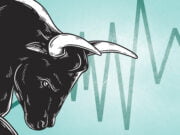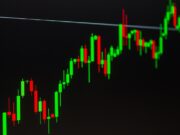The Bureau of Labor Statistics reported Wednesday that inflation hadn’t made any drastic improvements, continuing a trend that has pushed consumers to the edge and put the economy in potential jeopardy. The CPI (Consumer Price Index) – a comprehensive gauge of national costs and a good inflation indicator – rose 8.3% from last year, above the Dow Jones forecast of 8.1%. This was actually a modest drop from the 8.5% peak in March, but it was still near its highest level since the summer of 1982.
The core CPI jumped 6.2%, despite predictions of a 6% increase, casting doubt on optimism that inflation had peaked in March. Many experts had predicted that the CPI would slow in April compared to the previous month, indicating that March was the year’s highest inflation rate. However, the newest statistics revealed a slower-than-expected decline in both headline and core inflation.
What more did the CPI report reveal? What should investors and consumers keep in mind? Get the rest of the story below:
Inflation has been the greatest danger to a recovery that began shortly after the pandemic and saw the economy grow at its fastest rate since 1984 in 2021. However, inflation has moved beyond gas stations and grocery stores, affecting housing, vehicle sales, and other industries.
Officials at the Federal Reserve have responded to the situation with two interest rate increases this year and promises of more until inflation falls below the central bank’s target of 2%. On the other hand, the Fed faces a difficult task, as seen by the CPI figures released on Wednesday.
Businesses have been building up inventory, helping core inflation in the goods sector, but prices in the services sector are skyrocketing as Americans return to travel and other leisure activities. The latter will likely result in higher inflation that takes longer to lower. In a letter to clients, Wells Fargo economists Sarah House and Michael Pugliese said, “Inflation remains widespread, making it all the more difficult to curtail. On an annualized basis, the core CPI inflation report in April was still more than triple the Fed’s 2% target.”
The data released on Wednesday does imply that the inflation peak has passed, as economists, the Federal Reserve, the White House, and the American people had hoped. However, several variables will keep costs high this summer. The conflict in Ukraine has impacted energy and food costs. Meanwhile, fresh pandemic-related lockdowns in China threaten to compound the global supply chain problems that have plagued the world in recent months. As a result, it’s unclear how much inflation can be slowed until these issues are rectified.
President Biden weighed in on Wednesday after the CPI report, labeling inflation “unacceptably high” and stating that “Bringing it down is my top economic priority.” Biden went on to say, “The fight against global supply chain issues related to the pandemic and Putin’s price hike will continue every day.” This was ahead of a trip to Illinois, where he would talk to farmers about plans to cut down their costs, ramp up production, and decrease food prices for U.S. consumers.
Investors highly monitor the newest inflation data as an indicator of inflation in the U.S. for groceries, housing, gasoline, and a range of other products and services. Although certain consumer statistics and corporate reports show that people are still spending despite rising costs, investors are monitoring to see if consistently high inflation will finally restrict demand. This would, unfortunately, stifle U.S. economic development, which is largely reliant on consumer spending.
The CPI statistics may also predict how much action the Federal Reserve will need to take to restore inflation to its objective of 2%. For the past year, inflation has remained substantially above that level. Many are concerned that the Fed’s present policy, which includes larger-than-usual rate rises and a roll-off of its vast balance sheet, is unlikely to be affected by April’s inflation figures. It would be fair to assume that this data – particularly if it continues in the coming months – would only leave future rate hikes easier for the Fed to embrace.









